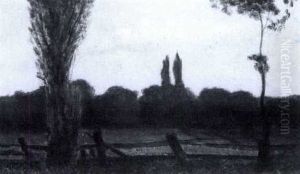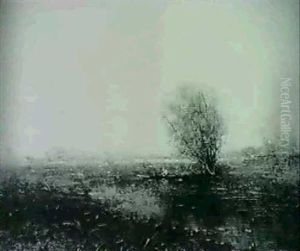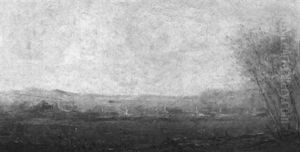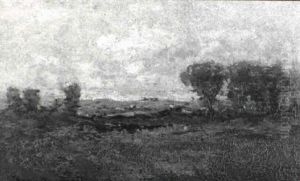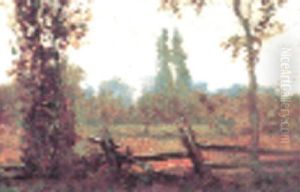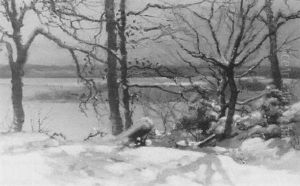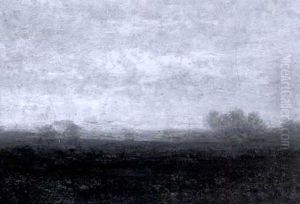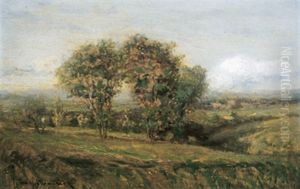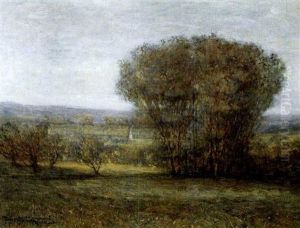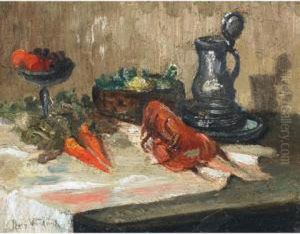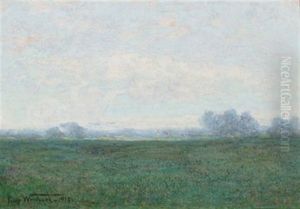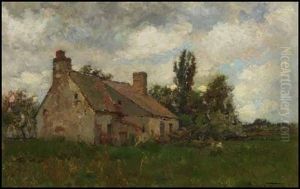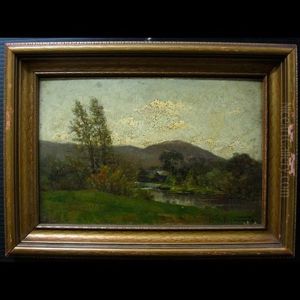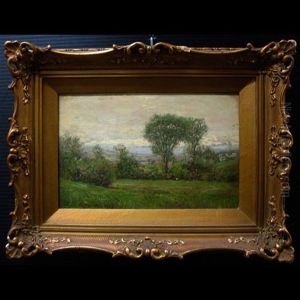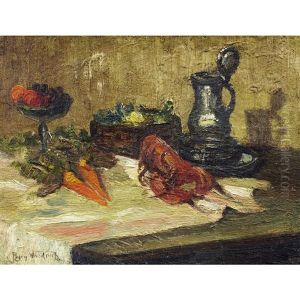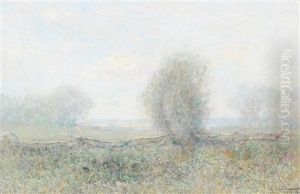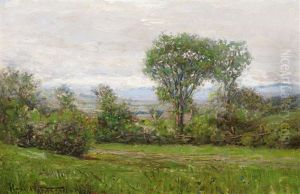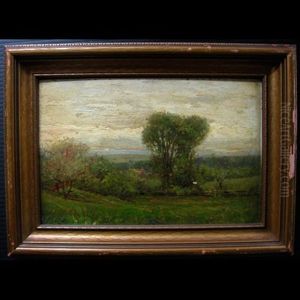Percy Franklin Woodcock Paintings
Percy Franklin Woodcock was a Canadian artist known for his landscape paintings and his role as an art educator. Born in Hamilton, Ontario, in 1855, Woodcock demonstrated an early aptitude for the arts. His initial exposure to art came through his family, as his father was an amateur artist. Woodcock's early education and artistic training are not well-documented, but it is known that he pursued his passion for painting throughout his life.
Woodcock left Canada to enhance his artistic education and spent time in London, where he was exposed to the works of the great European masters. This experience had a profound influence on his artistic style and technique. After his time in Europe, Woodcock returned to Canada and settled in Ottawa. There, he became actively involved in the local art scene and began to establish himself as an artist of note.
Throughout his career, Woodcock painted a variety of subjects, but he is most remembered for his landscape paintings, which often depicted the Canadian wilderness and rural scenes. His works are characterized by a keen observation of nature and a delicate handling of light and color. Woodcock's paintings were well-received, and he participated in numerous exhibitions, both in Canada and abroad.
In addition to his work as a painter, Percy Franklin Woodcock was also a dedicated art educator. He taught at the Ontario School of Art (now the Ontario College of Art and Design University) where he influenced a generation of young Canadian artists. His commitment to education and the art community was significant, and he played a role in the development of art institutions in Canada.
Woodcock’s contributions to Canadian art were recognized during his lifetime, and his works are now part of several Canadian art collections, including those of major galleries and museums. He continued to paint and teach until his death in 1937. Woodcock's legacy is that of a skilled painter and a mentor who helped shape the Canadian art landscape during the late 19th and early 20th centuries.
